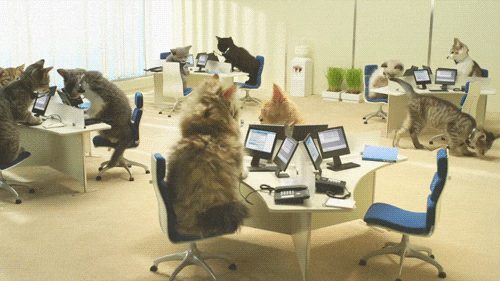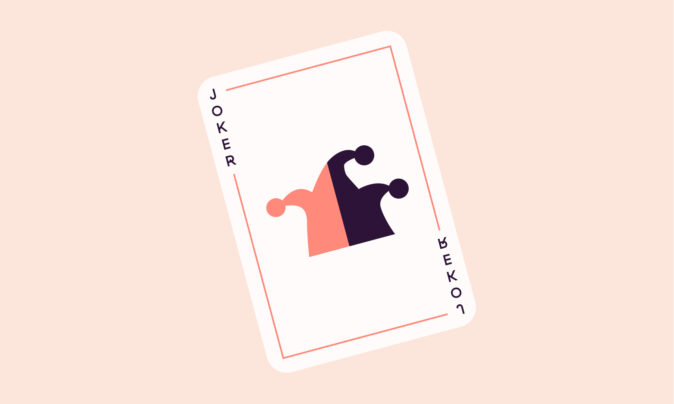Can a seemingly small HR tactic really boost employee retention by 82% and make employees over 29x more likely to feel satisfied with their jobs?
Yes, the right onboarding program can do just that!
Onboarding employees is the final step of the recruitment cycle, and companies that ignore it run the risk of lower employee engagement and higher turnover rates and costs.
With so much at stake, it isn’t surprising that almost 60% of companies are looking to overhaul their onboarding programs. After all, first impressions count, and you want to make sure yours exceeds expectations.
To help you achieve just that, we’ve got some creative ideas for making employee onboarding a fun and engaging process that sets the right tone from the start.
TL;DR — Key Takeaways
A positive employee onboarding experience makes a material difference when integrating new hires into the company culture and workflow.
The 5 C’s of onboarding (Compliance, Clarity, Culture, Connection, and Check-back) are vital pillars for integrating new hires and should be covered in your onboarding activities.
There are dozens of creative onboarding ideas to explore, such as a personalized welcome kit, interactive onboarding apps, peer shadowing opportunities, team lunches, and more.
Choose the ones that most align with your company’s needs to foster engagement and meaningful connection with the office culture.
Avoid common onboarding pitfalls, like lack of structure, TMI, and neglect of new hires’ needs, to avoid new employees feeling stressed, overwhelmed, or isolated.
What are the 5 C’s of onboarding?
The 5 C’s of onboarding are Compliance, Clarity, Culture, Connection, and Check-back. These five elements help ensure that all new hires understand company policies, their roles and the organizational culture, build relationships, and receive continuous support.

Think of the onboarding experience like an aperitif — it opens the appetite and sets expectations for what’s to come. Nail the onboarding process, and your business will reap the rewards.
Of course, there’s no one-size-fits-all solution, but there are some best practices to keep in mind. Regardless of the employee onboarding ideas you choose from below, your process should cover all five C’s of onboarding, so let’s examine each one.
#1. Compliance, Forms, and Paperwork
From a legal standpoint, it’s essential to provide a proper and thorough introduction to the company. That includes knowledge of the relevant company policies, confidentiality, workplace harassment, and other specific rules and protocols of different departments.
Building a structured process that minimizes new hires’ time dealing with paperwork and allows them to spend more time adjusting to the new role will pay dividends. In fact, research from the Society for Human Resource Management (SHRM) shows that companies with a structured onboarding process see a 50% increase in new hire productivity.
Automate this step to make it as lean and efficient as possible. How? By creating department-specific checklists and videos that are always up-to-date and ready to go.
#2. Clarification of roles and expectations
According to Gallup, only 12% of employees strongly agree that their organization does a great job of onboarding new employees — and a lack of communication is often to blame.
Hiring managers are expected to introduce and explain again the role’s expectations and how it fits into the wider organizational structure. This gives new hires the opportunity to ask any questions that might come up.
Clearly communicating responsibilities and performance goals and making the right introductions can dramatically improve this figure, leading to better job satisfaction and performance from the start.
#3. Culture fit in the company
We know the importance of hiring for cultural fit. But how do you actually help new employees embody it?
New hires get an initial flavor of company culture during their interview process, but it isn’t until they’re onboarded that they really start immersing themselves in it.
Sharing about the company’s story, values, mission, and vision, as well as any unwritten norms and etiquette, can help new hires orient themselves and adapt faster to their new environment.
#4. Connections with new colleagues
Employees with friends at work are seven times more likely to be fully engaged in their jobs. Don’t underestimate the social value of work. Take the time to meet with colleagues in your direct team and beyond.
Having an informal chat to get to know each other better makes work a nicer place to be. Plus, you’re more willing to go to bat for people you have a vested interest in, which makes the organization stronger and friendlier overall.
#5. Check in regularly
It’s important to follow up with new employees during their first 30 to 90 days. Many organizations implement a formal “First 90-day Plan” to set key milestones for this period.
A study from UrbanBound shows that 28% of new hires will leave within the first three months due to a poor onboarding experience. Weekly 1:1’s with direct reports are a great way to mitigate this.
20 creative onboarding ideas for new employees
Here are 20 new employee onboarding ideas we think might help. Please customize them as needed to best suit your unique needs and company culture.
To make onboarding a success, you must think beyond just sharing information with a new hire. Start the experience of a new role on a high note — inspired, motivated, and full of ideas. Use this opportunity to better retain your new hires and create lasting connections between colleagues.
1. Create a new hire welcome package

We love a good welcome kit — who doesn’t? Equipping your new hire with some fun and useful company swag can be a really nice way to welcome them to the team. Consider investing in branded items like t-shirts, pens, notebooks, water bottles, and more.
Companies like Mars, Salesforce, and Twitter all offer great welcome packages if you’re after some real-life inspiration (and proof that this onboarding idea really works!)
Don’t forget to add a personal touch, too, like a handwritten note. Depending on your company’s size and style, this could be a letter from the CEO, the HR manager, or the new hire’s line manager.
Customizing the package based on the employee’s role or personal interests is another way to show thoughtfulness and consideration.
2. Build an interactive onboarding app
One great thing about everything being digital these days is that it’s easy to impress your new hires through an interactive onboarding app — a virtual tour guide to the ins and outs of your company’s culture and operations.
Don’t rush to your dev team, though. You don’t have to create a full-scale app. A simple but well-thought-out Notion page or a comprehensive onboarding checklist can also do the trick.
Some things you’ll definitely want to include in this checklist are:
Company policies, as well as the history, mission, and values
Setting up logins to all the right tools
Organizing introductions with all the key people
Any paperwork you need to get from your new hire
Sprinkling in some fun elements will ensure that your brand’s personality isn’t lost in this process. Consider including interactive quizzes to test their knowledge, engaging videos to guide them through, or even personal anecdotes from team members for a more human touch.
3. Assign a buddy
Just like in school, the buddy system is a useful and reassuring tool for any new hire to lean on. Being paired with someone in a similar role but who has been at the company for a while helps build relationships and creates a safe space for asking questions.
Build regular check-ins into your buddy system. By forging these connections early on, you’re laying the groundwork for a supportive network that extends beyond the confines of onboarding. It can even be a good idea to have a few different types of buddies:
Onboarding buddy: To help with day-to-day tasks and get settled into the role
Culture buddy: To help navigate benefits and social groups
Leader buddy: To give an inside scoop on higher-level strategy and company-wide goals
It doesn’t matter whether your new hire is office-based or fully remote. Assigning a buddy gives new hires a vital point of contact to help navigate all the new information and those overwhelming early days.
4. Schedule an entry interview

Entry interviews are a chance for new hires to speak directly with their manager. The goal of this meeting (or video call) is to openly discuss the role’s expectations, understand personal and career aspirations, and discuss how the role aligns with these goals.
Some great interview questions to ask your new hires include:
What are your career aspirations, and how do you see this role contributing to your long-term goals?
What are your initial impressions of our company culture, and how can we ensure you feel aligned with our values and ways of working?
Are there any specific support or resources you feel you need to excel in your role?
What is your preferred method for receiving feedback and communication from your manager and team members?
What are your immediate priorities or goals for your first few weeks in this role, and how can we support you in achieving them?
Getting the entry interview right lays an amazing foundation for an open relationship between new hires and their seniors, making the discussion of promotions, pay rises, and ascending leadership more fluid and natural when they later arise.
5. Host a scavenger hunt
We know it sounds a little unconventional, but what a memorable way to start a new position, especially if it is done with a cohort of new hires! A scavenger hunt is all about fostering camaraderie and breaking the ice — perfect for welcoming new graduates, but you should probably skip this idea when hiring for more senior positions.
How does it work? Provide clues that lead to important locations (either in person or digitally) so new hires can familiarize themselves with the lay of the land. Adding in team-building activities or trivia about company history and culture is also a great way to promote bonding between colleagues.
Encourage collaboration and friendly competition (maybe a prize for the winning person or team) to ensure everyone feels included and invested. With a bit of thought and planning, a scavenger hunt can be a one-of-a-kind onboarding experience that’s both fun and meaningful.
6. Host a group lunch or happy hour
Hosting a group lunch or happy hour within the first few weeks of a new hire’s arrival is a simple way to make them feel included and welcomed into the organization.
Taking the opportunity to bond outside the typical workplace is always a positive welcome sign, where everyone can let their hair down and get to know their new colleagues. And as we know, the socialization process is also a vital indicator of future workplace performance. A worthwhile investment!
7. Build personalized workstations

Imagine walking into a fully equipped workstation personalized just for you. Organize all the technology and equipment new hires will need for their jobs ahead of time so they have as seamless an onboarding process as possible.
No one wants to start a new job without a computer, desk, or even a chair (this has happened to us). It just wastes everyone’s time. Oh, and don’t forget to set up their work email account as well.
You could take this a step further and add a little welcome note on your new team member’s desk or format a new email account to receive a personalized welcome email if you have remote employees. It’s the little details that make new hires feel valued and at home.
8. Host interactive Q&A sessions
It can feel uncomfortable if you’re the only one asking lots of questions. But there’s safety in numbers. That’s why an interactive Q&A session with other new hires is a great way to get everyone on the same page without any shyness.
You might need to tailor the approach depending on your team size, but try to ensure every new employee asks at least one question to help empower them all. For smaller teams, where you might only be bringing on one hire at a time, scheduling informal Q&A sessions with different colleagues is still very valuable.
9. Schedule days for peer shadowing
Peer shadowing can help overwhelmed newbies take a step back and see the bigger picture of how different departments work together to achieve a common company goal.
By observing different employees’ tasks and responsibilities, new hires can gain a holistic understanding of how each piece fits into the larger puzzle. This helps them orient themselves in their new role and get a deeper understanding of who is responsible for what.
New hires can join the marketing team for a campaign brainstorm or take a customer service shift to learn more about clients and products hands-on.
10. Create customized learning paths

Consider using the entry interview to craft a customized learning path for your new hires. This empowers them to take their own professional development into their own hands. It can be especially powerful if you offer a self-development budget as a benefit.
Make sure you communicate how such a benefit can be claimed during the onboarding program so there are no doubts surrounding it. This can go a long way to making new hires feel like you have their back and want to see them succeed and grow professionally.
11. Ask about their preferences
Everyone thinks, works, and communicates differently. Take the time to learn your new hires’ preferences so they can feel understood from day one. This is especially relevant if you’re an international team, where culture can affect how people express themselves.
Even if your company doesn’t cross country lines, this is still a very useful exercise for a direct manager to undertake with their new employees. Create a simple document where you can both align on your preferred:
Communication style: Are you direct or diplomatic? A visual or aural communicator?
Information processing style: Do you need to repeat information back to ensure you understand it? Do you tend to look away from the speaker to retain information better?
Ways of working: Do you prefer to be given direction, or do you ask for help when you need it? You could even include when in the day you are most productive here.
Ways to receive feedback: Do you prefer a compliment sandwich or just cut the fluff and hear it straight?
Doing this can help both sides give each other the benefit of the doubt, better understand each other and avoid misunderstandings that might arise from cultural or personality differences.
12. Give them a company culture book or guide
Consider providing a creative and aesthetic book (or digital guide) that explores company culture, values, and history. This is kind of like an employee handbook and can be a great place to put necessary (but often boring! There, we said it) documents.
For example, BambooHR sends all new hires a copy of Crucial Conversations by Kerry Patterson as an introduction to the company’s values and culture.
13. Introduce them to company wellness programs

Don’t let “well-being” be just a buzzword. Introduce employees to any well-being benefits as part of the onboarding process. New hires need to feel like they understand and can access their benefits with ease.
One way to do this is to choose a wellness activity to do together during their first month or simply let them know about any company-wide activities, like fitness challenges, that may be going on.
Finally, make sure they know how to claim expenses or direct them to the relevant Notion page, where they can see everything that’s on offer.
14. Schedule a show and tell
We do this at Toggl Hire with every new hire. Our new hire creates a get-to-know-you quiz with our skills testing tool, and we have to guess which answers are correct. You can make your own analog version or simply let the new hires create an intro presentation on themselves.
Be prepared with creative, fun questions, focus on the personal side, and keep it light!
15. Add them to your social groups
Make sure you invite your new hire to a few social groups to get them started. Building connections beyond work and meetings is vital for fostering camaraderie and strengthening relationships.
The usual suspects here are Slack channels and WhatsApp groups dedicated to different activities. A writing club, fitness club, book club, or movie club are all great options.
Taking this a step further, you could encourage your new hire to join a company Strava club and partake in fitness challenges there with other coworkers. Alternatively, a communal Pinterest board for saving crafts or recipes to then make could be a creative way to keep a crafting or cooking club alive.
16. Host creative onboarding challenges

Want an immersive onboarding experience for your new hires?
Organize a hackathon. This is a great way to kick-start developers in their new role. It’s super useful to have a pair of fresh eyes untainted by “this is how we’ve always done it.” It gives your new employees a great opportunity to let their ideas run wild while also familiarizing themselves with your tech stack.
For another example, take a play out of our playbook. At Toggl, we frequently host company-wide challenges like health challenges to see who can do the longest plank or whip up the tastiest recipe (we don’t host them every time someone joins the team, but it’s an option if your team is small enough!).
It’s important to keep the goal lofty and not too specific so that onboarding activities don’t get too constricting. You want to keep it creative and innovative.
17. Offer recognition of first achievements
Set a calendar reminder to publicly celebrate your new hire’s success in their first week on the job. Also, keep a close eye on their progress and milestones during these first weeks. A bit of extra recognition and appreciation can go a long way to boosting their motivation and confidence in their new role and helping them feel like part of the team.
The actual milestones will vary greatly depending on the role, but the method for sharing the love doesn’t need to. If the new employee is a writer, it can be as simple as tagging them on Slack and asking other employees to interact with their article or like a new social campaign if they’re a social media marketer.
18. Create feedback loops
Make sure your employee onboarding has a feedback loop built into it. Schedule time to ask how new employees feel after a few days on the job. In a large company, it can be especially challenging to keep track of how a new hire is doing.
Encourage open and honest dialogue. Ask how they’re feeling in their new job and if they have any suggestions to improve the onboarding experience. Another common practice is to send out surveys to new employees. This can be especially helpful for getting more creative onboarding ideas (if this list isn’t enough for you!).
19. Hold an office tour with a twist

If you work in an office, consider organizing an office tour with members from different teams. This is a fun way to get people from other departments together and build a solid foundation with those they might not work closely with day-to-day.
To make it even more engaging, ask the tour guides to prepare a few anecdotes or unknown facts about the workplace to share.
20. Integration into CSR initiatives
New hires should be brought into the fold on all fronts — work, social, and impact. Encouraging new hires to join corporate social responsibility (CSR) initiatives or other community service projects can help instill a sense of purpose and build strong personal ties with the broader team.
This also serves to boost new hire retention and employee engagement, which in turn leads to better productivity and profitability.
What to avoid during the onboarding process
A successful and creative employee onboarding experience will go a long way toward helping new hires effectively transition into their new roles. By the same token, subpar onboarding can have a lasting negative impact on those same metrics.
Here are some common mistakes hiring teams make when designing an employee onboarding process and what you can do to avoid them.
Lack of structure and clarity in the process
This will likely lead to different people repeating information to the new hire. Or, even worse, the new hire will get lots of contradicting information in their first week. This might make hires feel flustered and stressed as they try to make sense of everything.
💡 How to avoid it: Systematize the process and get crystal clear on the role every stakeholder plays in the onboarding activities
Front-loading all the information
Give new employees plenty of time to complete all onboarding activities. At least the first week should be fully dedicated to onboarding to avoid overwhelming new hires.
💡 How to avoid it: Make sure new hires are drip-fed information in a digestible way rather than all at once.
Not prioritizing the new hire
On the other hand, you don’t want to neglect your new hire, either. For example, if a new hire’s manager doesn’t schedule time with them in their first day or two, it can make a new employee feel alone and isolated.
💡 How to avoid it: Create a company-wide culture of celebration around new hires. Yes, it takes you away from your day-to-day, but onboarding a new addition to the team correctly will help you reach your goals ten times faster in the long run.
Hire the right employees with Toggl Hire
What makes a positive employee experience isn’t black and white.
If your company follows a robust employee onboarding process and still experiences slow ramp-up time, cultural misalignment, or poor employee performance — your recruitment process is most likely to blame.
A great onboarding process doesn’t mean much if you’re hiring the wrong talent to begin with.
Get super clear on who the right fit is with skills testing. Toggl Hire lets you screen candidates based on competence in the blink of an eye. Sign up for a free account and give it a try!
Julia Masselos is a remote work expert and digital nomad with 5 years experience as a B2B SaaS writer. She holds two science degrees Edinburgh and Newcastle universities, and loves writing about STEM, productivity, and the future of work. When she's not working, you'll find her out with friends, solo in nature, or hanging out in a coffee shop.








